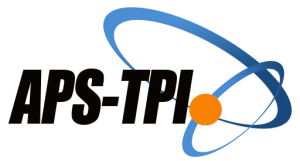LEVERAGING NANO-LEARNING INTO FASHION DESIGN CLASSROOM TIKTOK FOR FASHION VIDEOS
DOI:
https://doi.org/10.32832/educate.v9i2.17984Keywords:
Nano Learning, fashion design, tiktokAbstract
Nano-learning, a part of macro learning, involves small bursts of information into small video (approximately 60 seconds) has gained traction in educational matters. Tiktok, a social media platform known for short form videos, offer an excellent combination to integrate nano-learning into the fashion design classroom. This study explores the potentials of using Tiktok to deliver fashion design content in the classroom in a concise and engaging manner in education. Through a Descriptive Qualitative approach, involving an interview with 20 students who involve in Nano- learning, this study investigates the impact of Nano-learning with tiktok in enhancing students’ understanding of fashion design concepts. Participants were asked to examine their perception about the implementation of nano-learning with tiktok, and its impact to the education in general. Finding suggests that Tiktok Nano-learning is a promising tool for fashion design education in general. Students reported that the short- form video format that they made, made the content more accessible and engaging and enhance their understanding of fashion design concepts. They also appreciated the fact that the implementation of Nano-learning made them more creative and understand the content more. However the study also identified challenges, such as the potential for information overload, and the need for careful curation in the collection of the content. Overall the study demonstrated the potential of Tiktok Nano-learning to revolutionize fashion design education in summary. Leveraging the platform popularity and engaging format, educators can maximize the effective learning experiences that cate to the needs of the students for better classroom environment.
References
Anumanthan, S., & Hashim, H. (2022). Improving the learning of regular verbs through TikTok among primary school ESL pupils. Creative Education, 13(3), 896-912.
Azman, A. N., Rezal, N. S. A., Zulkeifli, N. Y., Mat, N. A. S., Saari, I. S., & Ab Hamid, A. S. (2021). Acceptance of TikTok on the youth towards education development. Borneo International Journal eISSN 2636-9826, 4(3), 19-25.
Fahey, J., & Ramos, M. (2015). Nano-learning: An Exciting New Tool for Professional Development. AAA (Association for Accounting Administration.
Fiallos, A., Fiallos, C., & Figueroa, S. (2021, July). Tiktok and education: Discovering knowledge through learning videos. In 2021 Eighth International Conference on EDemocracy & EGovernment (ICEDEG) (pp. 172-176). IEEE.
Khlaif, Z. N., & Salha, S. (2021). Using TikTok in education: A form of micro-learning or nano-learning?. Interdisciplinary Journal of Virtual Learning in Medical Sciences, 12(3), 213-218.
Kim, H., Sefcik, J. S., & Bradway, C. (2017). Characteristics of qualitative descriptive studies: A systematic review. Research in nursing & health, 40(1), 23-42.
Liu, Y. (2023). TikTok’s influence on Education. Journal of Education, Humanities and Social Sciences, 8, 277-280.
Mariappan, L. (2024). From Swipe to Learn: Unleashing the Potential of Tik Tok as a Nano-learning Tool. Journal of Electrical Systems, 20(7s), 1692-1695.
Nguyen, H., & Diederich, M. (2023). Facilitating knowledge construction in informal learning: A study of TikTok scientific, educational videos. Computers & Education, 205, 104896.
Normaizatul Akma, S., Radzi, N. A. M., & IBRAHIM, M. (2021). Creating Excitement in Learning Through Tiktok Applications.
Radzitskaya, Y., & Islamov, A. (2024). Nano-learning approach in developing professional competencies of modern students: Impact on self‐regulation development. Journal of Computer Assisted Learning, 40(3), 1154-1165.
Stenberg, K., & Maaranen, K. (2022). Promoting practical wisdom in teacher education: a qualitative descriptive study. European Journal of Teacher Education, 45(5), 617-633.
Willman, O. (2021). TikTok as a tool for international growth in the fashion industry–case study for house of Halla Oy.
Yélamos-Guerra, M. S., García-Gámez, M., & Moreno-Ortiz, A. J. (2022). The use of Tik Tok in higher education as a motivating source for students. Porta Linguarum Revista Interuniversitaria de Didáctica de las Lenguas Extranjeras, (38), 83-98.
Zhang, X., Wu, Y., & Liu, S. (2019). Exploring short-form video application addiction: Socio-technical and attachment perspectives. Telematics and Informatics, 42, 101243.
Zulkifli, N. N., Letchumanan, M., Kamarudin, S., Abd Halim, N. D., & Hashim, S. (2022). A Review: The Effectiveness Of Using Tiktok In Teaching And Learning. In Proceedings Of The 30th International Conference On Computers In Education (Icce). Malasia: Asia-Pacific Society For Computers In Education (Pp. 292-297).
Downloads
Published
How to Cite
Issue
Section
License
Copyright (c) 2024 Ria Maisalinia, Movi Riana Rahmawanti, ani safitri, enni erawati saragih, Umi Fatonah, Farah Dilla Azhari

This work is licensed under a Creative Commons Attribution 4.0 International License.
| Authors grant the journal copyright of the work licensed under CC-BY-SA or The Creative Commons Attribution–ShareAlike License that allows others to share the work with an acknowledgement of the work's authorship and initial publication in this journal. | Penulis memberikan hak cipta karyanya kepada jurnal yang dilisensikan dengan CC-BY-SA or The Creative Commons Attribution–ShareAlike License yang memungkinkan orang lain untuk menggunakan karya dengan pengakuan kepengarangan karya dan publikasi awal dalam jurnal ini. |








